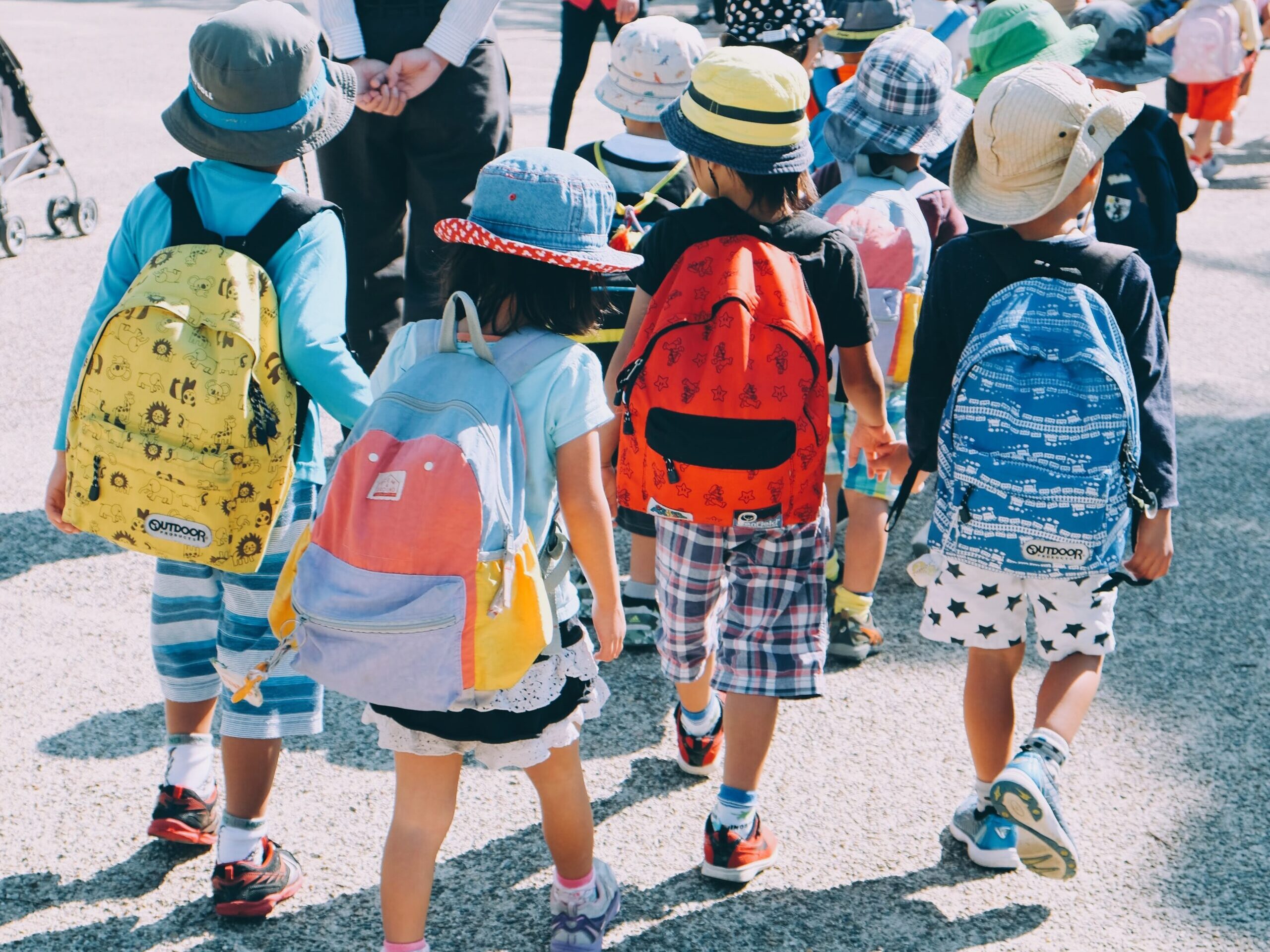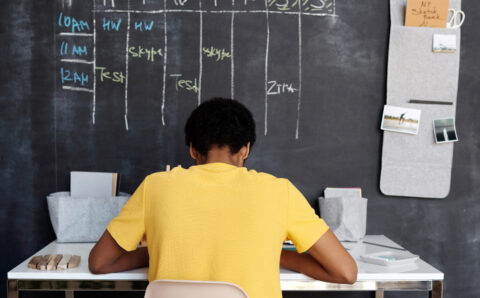Ryan Derenberger is a freelance journalist and editor, a Journalism and AP Language teacher at Whitman HS in Bethesda, MD, and the founder of 'The Idea Sift.' He also serves on the board of directors for student journalism nonprofit 'Kidizenship.'
December 19th, 2021 at 2:58 pm EDT
What do you mean when you ask me about “the good kids”?
I’ve taught high school English at three schools. I’ve taught freshmen, sophomores, juniors, and seniors. I’ve taught students under-level, on-level, and above-level. I’ve run electives in journalism and test prep. I’ve run credit recovery programs. I’ve led AP teams. I’ve pulled up to seniors who drive new BMWs. I’ve worked with homeless students.
Everywhere I’ve worked, my kids are “the good kids” — but only since I’ve been working at a largely white, upper-middle-class school have I heard others call them “good,” too.
Let’s get literal. Research shows upwards of 1 in 20 adults are psychopaths. In kids, the figure might as low as 1 in 100. They’d be as hard to spot in school as they are anywhere else, so just like anywhere else, you put it out of your mind.
So when I tell you that all of my kids have always all been good kids, you know I’m not delusional. You know that what I mean is that they work hard in my classroom. When they err, it’s rarely intentional. They try to build different skills each day, even if they aren’t always the ones we want them to build. Though they don’t always respect each other, they respect adults who give them respect. When they’re unfocused, it’s generally during a lesson I didn’t have enough time to plan or perfect. They’re more self-aware than most adults, able to recognize their own strengths and weaknesses. They also have exceedingly normal deficiencies that slip through the cracks. They know when they’re having bad days. They are honest even when you don’t ask them to be. They are just begging to talk about issues that matter, and work in project-based settings to build something. When you plan the perfect lesson, they engage 100%. Yes, they can be naive, but it’s in the way someone new to a job would be.
They are as human as any of us. And that’s all of them.
They do not all graduate with the same readiness, though — a reality we, complicit, let dictate our opinions of the kids themselves. Score tracking nationwide continues to show gaps based on socioeconomics and race. About race specifically, researchers have termed the disparity “the achievement gap.” Thin and uncoordinated, the initiatives to mount the cliff are little more than swinging bridges, and the pandemic has only exacerbated the distance. That the gap’s not yet closed, I fear, will soon become the dominant rallying cry of racists. The reality, meanwhile, will remain one not of bad kids, but of bad adults.
Property taxes still serve as the dominant contributor to school budgets. America’s past and present seem to have found every way to demolish this main revenue source for struggling schools. Destroying black wealth, bad realtors and bad loan officers in the twentieth century drew hard lines to designate neighborhoods with mostly white residents as “green” and fit for loans, and neighborhoods with persons of color “red” and unfit. This phenomenon known as “redlining” came without shame or consequence, guides from the time detailing that an “undesirable population” was justification enough for a label. Wider goes the gap.
Bad lawmakers then permitted bad bankers to deny loans to Black Americans who had the exact same salaries and credit scores as approved white applicants, “no questions asked,” all the way through 1968. Wider and wider goes the gap. And outright inhumanity to insult, well into the twenty-first century now, we still see massive swings in home appraisals based on the eyes of who else but bad appraisers — more ways to tank black wealth, more ways to tank neighborhoods’ ability to furnish schools with the staff and resources any school would need and every child deserves.
The problems in education — and the wrongheaded and often racist assumption that it’s the aptitude of underperforming students to blame — are not great mysteries of the universe: they boil down to the exponential effects of chronic, racist underfunding. Money buys educators time, and money buys more educators themselves. Money buys after-school programs and sports and extracurriculars. Money spreads students out with more experts to help, allowing time and focused preparation to do what they always do: produce results. Money buys more time for parents, too, who can then volunteer, attend games, monitor homework, and say things to their kids like, “I don’t want you to get a job yet — school is your job.”
All students to my eye are underperforming. All of them. I’ve outlined before how high school in particular is a failed experiment, and offered new suggestions based on what results we’ve seen and what choices are available to us now that weren’t when we started. What we should seek, a bevy of engaging paths and assessments for students, teachers largely know how blaze. They want to take their kids further and rarely can. The average teacher is capable, empathic, and taken advantage of. Those taking advantage from the warm comfort of office desks are facing underfunded budgets themselves, so they sleep soundly at night knowing they don’t have much choice when they take a machete to teachers’ work and stuff 30 kids, fire codes notwithstanding, into a dated classroom with traditionalist curricula and bid a teacher, “Teach!”
The average day for a public-school teacher is an absurdity; for underfunded districts, it’s like satire on satire. In 40-80 minutes per day, educators must plan well for several different classes, grade for 5-6 different periods with meaningful feedback, document behavior and progress on detailed special education reports, call parents personally if a student is failing, train for new initiatives, attend meetings with teachers of the same classes, then with teachers of the same department, then with all staff at the same school, and somewhere, breathe. Many hold second jobs, especially over the summer. Many take on second or third roles as coaches and extracurricular advisers, further impacting their ability to instruct well. Cornered, they rarely dare to do the math on their stipends and accept that, for the extracurricular hours they work, they’re earning a third of minimum wage.
There are some unskilled staff who, just as in every profession, work the system to stay — but teachers largely get into the profession for the right reasons. (Knowing what you know, would you dive in otherwise?) There are thousands of community-etched blueprints ready to go, resting in the untapped corners of educators’ minds, lamented as impossible at the rare, rushed, group-therapy happy hour.
There is an entire generation of good kids not yet soured, sold-out, jaded, or otherwise beaten down, who want nothing more than to do things they know matter. And we have about half as many empathic experts as we’d need to show the whole country, that every kid is “good.”
Of course money would solve education. But who are we kidding — that’d never happen. Instead, we’ll just talk about the good kids, and the bad kids, and wonder.
An education budget with class sizes at 30, and only those who succeed in spite of the system termed “the good kids.”
THE SIFT
An education budget with class sizes at 15, and every kid recognized as “good.”












